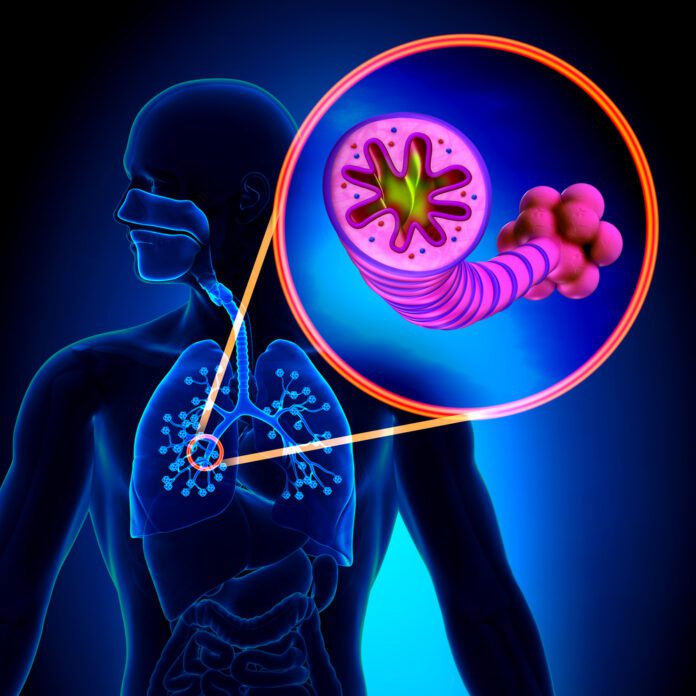Overview Of Chronic Obstructive Pulmonary Disease (COPD)
Chronic obstructive pulmonary disease (COPD) is a disease of the airways and lungs that is characterized by a progressive airflow limitation, which is not fully reversible and is associated with an abnormal inflammatory response of the lungs to noxious particles or gases. It is a group of diseases that includes chronic bronchitis and emphysema.
Emphysema slowly destroys air sacs in the lungs, which interferes with outward airflow Bronchitis causes inflammation and narrowing of the bronchial tubes, which allows mucus to build up.
The top cause of COPD is tobacco smoking. Long-term exposure to chemical irritants can also lead to COPD. It’s a disease that usually takes a long time to develop.
Diagnosis usually involves imaging tests, blood tests, and lung function tests.
There’s no cure for COPD, but treatment can help ease symptoms, lower the chance of complications, and generally improve quality of life. Medications, supplemental oxygen therapy, and surgery are some forms of treatment.
Untreated, COPD can lead to a faster progression of the disease, heart problems, and worsening respiratory infections.
COPD makes breathing increasingly more difficult. But it develops slowly over many years and you may not be aware you have it at first.
Most people with COPD do not have any noticeable symptoms until they reach their late 40s or 50s.
Cause Of COPD
The cause of COPD is usually long-term exposure to irritants that damage your lungs and airways. In the United States, cigarette smoke is the main cause. Pipe, cigar, and other types of tobacco smoke can also cause COPD, especially if you inhale them.
Exposure to other inhaled irritants can contribute to COPD. These include secondhand smoke, air pollution, and chemical fumes or dust from the environment or workplace.
Rarely, a genetic condition called alpha-1 antitrypsin deficiency can play a role in causing COPD.
Symptoms Of COPD
Main symptoms
Common symptoms of COPD include:
-
increasing breathlessness – this may only happen when exercising at first, and you may sometimes wake up at night feeling breathless
-
a persistent chesty cough with phlegm that does not go away
-
frequent chest infections
-
persistent wheezing
-
The symptoms will usually get gradually worse over time and make daily activities increasingly difficult, although treatment can help slow the progression.
-
Sometimes there may be periods when the symptoms get suddenly worse – known as a flare-up or exacerbation. It’s common to have a few flare-ups a year, particularly during the winter.
Other symptoms
Less common symptoms of COPD include:
-
weight loss
-
tiredness
-
swollen ankles from a build-up of fluid (oedema)
-
chest pain and coughing up blood – although these are usually signs of another condition, such as a chest infection or possibly lung cancer
-
These additional symptoms only tend to happen when COPD reaches an advanced stage.
Treatment Of COPD
There’s currently no cure for chronic obstructive pulmonary disease (COPD), but treatment can help slow the progression of the condition and control the symptoms. COPD isn’t contagious.
Treatment for COPD
Treatment can ease symptoms, prevent complications, and generally slow disease progression. The healthcare team may include a lung specialist (pulmonologist) and physical and respiratory therapists.
Medication
Bronchodilators are medications that help relax the muscles of the airways, widening the airways so you can breathe easier. They’re usually taken through an inhaler or a nebulizer. Glucocorticosteroids can be added to reduce inflammation in the airways.
To lower the risk of other respiratory infections, ask the doctor if you should get a yearly flu shot, pneumococcal vaccine, and a tetanus booster that includes protection from pertussis (whooping cough).
Oxygen therapy
If the blood oxygen level is too low, you can receive supplemental oxygen through a mask or nasal cannula to help you breathe better. A portable unit can make it easier to get around.
Surgery
Surgery is reserved for severe COPD or when other treatments have failed, which is more likely when you have a form of severe emphysema.
One type of surgery is called bullectomy. During this procedure, surgeons remove large, abnormal air spaces (bullae) from the lungs.
Another is lung volume reduction surgery, which removes damaged upper lung tissue.
Lung transplantation is an option in some cases with end-stage chronic obstructive pulmonary disease (COPD) that meet specific criteria.
Other
Can COPD (chronic obstructive pulmonary disease) be prevented?
Since smoking causes most cases of COPD, the best way to prevent it is to not smoke. It’s also important to try to avoid lung irritants such as secondhand smoke, air pollution, chemical fumes, and dust.
Source
https://www.sciencedirect.com/topics/medicine-and-dentistry/chronic-obstructive-pulmonary-disease
https://my.clevelandclinic.org/landing/preparing-for-coronavirus
https://www.healthline.com/health/copd
https://www.nhs.uk/conditions/chronic-obstructive-pulmonary-disease-copd/symptoms/
https://www.healthline.com/health/copd



